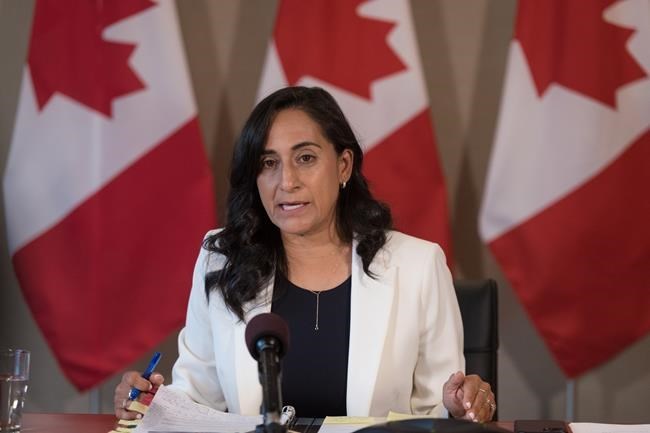OTTAWA — Defence Minister Anita Anand met with allies on Wednesday to discuss reinforcing a Canadian-led battlegroup in Latvia with thousands more soldiers, even as uncertainty swirled around what this country can — and will — provide.
Anand revealed the discussions while attending a NATO defence ministers’ meeting in Brussels, where she announced another $47-million worth of military aid for Ukraine, including winter clothing, artillery shells and specialized drone cameras.
“We are making sure that all allies are on board with committing additional resources and personnel as we surge to brigade level,” she said about the Latvia talks. “Canada will continue to be there in support of defence and deterrence on NATO's eastern flank.”
Prime Minister Justin Trudeau first announced an agreement with Latvia in June to essentially double the size of the 2,000-soldier battlegroup that Canada has been leading since 2016 by turning it into a brigade.
The deal followed similar arrangements involving seven other eastern European countries where NATO has battlegroups designed to deter the threat of a Russian attack.
Canada contributes about 700 troops to the force in Latvia, which also includes soldiers and equipment from 10 other NATO members. That is up from about 600 before Russia’s invasion of Ukraine in February.
Latvian Ambassador to Canada Kaspars Ozolins said talks are still early but will ramp up in the coming months as Canada and its partners iron out who will contribute what, and where.
“It’s not like a sprint,” he said in an interview Wednesday. “This will take time.”
Even basic details such as the size and structure of the planned brigade remain up in the air, though the agreement between Ottawa and Riga does include some specific commitments by both sides.
For Canada, that includes acquiring and deploying anti-tank weapons, counter-drone and air defence systems, ammunition and explosives while positioning troops, equipment and ammunition to quickly surge into Latvia in the event of a Russian attack.
Canada only has light anti-tank weapons and doesn’t currently have any air defence systems, which has been identified as a critical gap in the Canadian Armed Forces’ inventory.
More importantly, the military is facing a shortage of personnel so severe that defence chief Gen. Wayne Eyre issued a sweeping order last week making recruitment and retention the organization’s top priorities.
Underscoring the importance of reinforcing NATO’s forces in Latvia, Ozolins said he has not heard any specific concerns from Canadian officials about the personnel shortage.
Yet he also acknowledged the many questions that continue to surround the planned brigade, which includes allies such as Denmark, Italy and Spain.
The agreement does not say “everything will be covered by or done by the Canadians,” Ozolins said. “But we will want to see the Canadians leading efforts toward implementation of the declaration, and let’s see what is the division of labour within the battlegroup.”
Another outstanding question is how many additional NATO troops will be deployed to Latvia on a permanent basis.
While Latvia has asked for permanent forces, Germany has set a precedent by putting a brigade on high alert in the event of a Russian attack on neighbouring Lithuania, but keeping it at home in the meantime.
Even without a personnel shortage, such an approach would appear impossible for Canada given its distance from Latvia — meaning more Canadians troops or a heavy reliance on its other allies to step up.
This report by The Canadian Press was first published Oct. 12, 2022.
Lee Berthiaume, The Canadian Press



